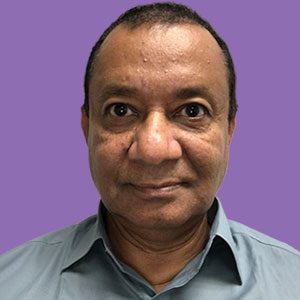Addiction to Prescription Drugs
More Americans died from drug overdoses in 2014 than any year before, according to the latest research from the Centers for Disease Control and Prevention (CDC). Most of these deaths can be attributed to the rise in prescription drug abuse, an epidemic that continues to grow.
While people misuse a wide range of prescriptions drugs, opioids, central nervous system (CNS) depressants and stimulants are the most widely abused. Opioids such as hydrocodone and OxyContin have been responsible for more overdose deaths than any other prescription substance.
Prescription opioid painkillers have become a driving factor in the increasing number of overdose deaths over the past 15 years. The amount of prescription opioids sold in the United States has nearly quadrupled since 1999, according to the CDC. The amount of pain Americans reported from 1999 to 2014 remained stable, yet the number of deaths from prescription opioids increased nearly fourfold during this time.
Prescription drug addiction is becoming more common. Treatment facilities across the nation are facing a massive influx of people with prescription drug use disorders. These individuals often struggle with cross addictions as well and may be dependent on multiple substances. Prescription drug addiction is expensive and usually becomes too costly to maintain, which drives many opioid users to heroin as a cheaper alternative.
265%increase in painkiller overdoses among men since 1999
400%increase in painkiller overdoses among women since 1999
17,241unintentional prescription overdose deaths in 2011
6.1 millionAmericans misuse prescription drugs each month
52 millionpeople in the United States have abused prescription drugs
For those locked in the grips of prescription drug addiction, professional treatment is available. Rehab facilities and recovery specialists can help you rid prescription drugs from your system and learn how to live life sober.
Start your recovery nowOur recovery programs are based on decades of research to deliver treatment that really works.
Get Help Now
Commonly Abused Prescription Drugs
The most widely abused types of prescription drugs — opioids, CNS depressants and stimulants — also provide intense and euphoric effects. Many users become addicted to these medications while treating legitimate medical conditions such as pain or mental health problems.
Stimulants
Doctors prescribe stimulants to help with weight control and to treat concentration conditions such as ADHD. Stimulants generally come in pill form and are swallowed or snorted when abused.
Stimulant effects are characterized by rushes of energy, increased stimulation and euphoria. Many individuals who become addicted to stimulants begin using cocaine as an alternative or take the drug to chase a more intense high.
Opioids
Opioids are used medically to treat chronic and temporary pain. These medications are some of the most potent painkillers and have high addiction rates. Many people addicted to opioids later transition to heroin use.
Opioids come in liquid, powder, or pill form and are typically swallowed, snorted or injected.
Central Nervous System (CNS) Depressants
CNS depressants are used to treat a number of conditions, including depression, anxiety and sleep disorders.
- Benzodiazepines
-
- Diazepam (Valium)
- Alprazolam (Xanax)
- Triazolam (Halcion)
- Estazolam (ProSom)
- Sleep Medications
-
- Zolpidem (Ambien)
- Eszopiclone (Lunesta)
- Zaleplon (Sonata)
- Barbiturates
-
- Mephobarbital (Mebaral)
- Phenobarbital (Luminal)
- Pentobarbital (Nembutal)
CNS depressants provide numbing and euphoric effects, which make them desirable for individuals looking to get high or self-medicate.

Signs and Symptoms of Prescription Drug Addiction
Prescription drugs affect individuals in different ways. Although the effects of a medication vary depending on the drug and the person taking it, there are signs and symptoms that could indicate abuse.
- Constipation
- Confusion
- Nausea
- Slowed breathing
- Euphoria
- Drowsiness
- Poor coordination
- Drowsiness
- Slowed breathing
- Unsteady walking
- Slurred speech
- Poor concentration
- Dizziness
- Problems with memory
- Reduced appetite
- Agitation
- High body temperature
- Insomnia
- High blood pressure
- Irregular heartbeat
- Anxiety
- Paranoia
In addition to drug-specific symptoms of abuse, some general behaviors may indicate that someone is struggling with prescription drug addiction.
- Falsifying or stealing prescriptions
- Taking higher doses than directed
- Excessive mood swings or hostility
- Changes in sleep schedule
- Poor decision making
- Irregular or increased energy
- Lethargic behavior
- Repeatedly losing prescriptions and requesting more
- Doctor shopping
If you notice these signs or symptoms in someone you care about, they could be facing an addiction to prescription drugs and may require substance abuse treatment.

Prescription Drug Addiction Affects Everyone
Prescription drug abuse is a problem ravaging every community, every race and every socio-economic demographic in the United States; the effects are not limited to one specific population.
Out of all Americans 12 or older, 20 percent have used prescription drugs for nonmedical purposes at least once in their lifetime. In 2013, 6.5 million Americans in this age group (2.5 percent of the population) abused prescription drugs in the past month, according to the National Institute on Drug Abuse.
Prescription drug abuse is particularly prevalent among teens and young adults. In 2015, 13 percent of high school seniors reported prescription drug abuse. A 2012 report from the Substance Abuse and Mental Health Services Administration shows 28.1 percent of college-aged young adults reported misuse of prescription drugs at least once in their lifetime.
A 2007 study by researchers at the University of Michigan examined the prevalence of substance abuse in college students by race.
- 18.2 percent were Hispanic
- 13.8 percent were white
- 8.4 percent were African American
- 6.3 percent were Asian
- 16.2 percent were Hispanic
- 13.8 percent were white
- 8.6 percent were African American
- 9 percent were Asian
The study concluded illicit use of prescription drugs was most prevalent among young adults aged 18 to 25.

Chronic Pain and Prescription Drug Addiction
Nearly 116 million Americans suffer from chronic pain, according to the National Institute on drug abuse. In the past two decades, prescription opioids have become the most popular form of medication treatment for those with chronic pain. When used properly, prescription opioids can be an effective way to manage pain. Long-term opioid use, however, is associated with a number of risks, including addiction.
Drug toleranceopioid users develop a tolerance and require higher doses of the drug for the medication to be effective.
Hyperalgesiausers may become more sensitive to pain after using opioids over time.
Substance use disordereven when using opioid medication properly, people can develop an opioid use disorder.
Three to five percent of individuals managing pain with prescription opioids develop a substance use disorder, according to researchers at the University of Tennessee.
Nearly 116 million Americans suffer from chronic pain.
Source: National Institute on Drug Abuse
Once an individual with chronic pain has developed a substance use disorder, proper treatment for their conditions becomes complicated. When the prescription runs out, the individual may turn to illicit opioids as an alternative.
Often the cost of prescription opioids on the street is too high to sustain long-term, driving individuals to self-medicate with heroin, alcohol or other substances.
How Dr. Huckaby Found SobrietyAfter an opioid use disorder relapse, Dr. Huckaby got serious about recovery. He is now the medical director for Orlando Recovery Center.
Read His Story
Mental Illness and Prescription Drug Addiction
One in five American adults has a mental illness. Of those 49 million people, 7.9 million had both a substance use disorder and a mental health disorder, according to the 2014 National Survey on Drug Use and Health. Many of those individuals struggle with prescription drug addiction.
Individuals with a serious mental illness (a diagnosable mental, behavior, or emotional disorder that causes serious functional impairment that substantially interferes with or limits one or more major life activities) have higher rates of substance use disorders, especially among young people. In 2014, 35.3 percent of adults 18 to 25 years old with a serious mental illness also had a co-occurring substance use disorder.
Those with co-occurring mental health and substance use disorders use prescription drugs illicitly — often in conjunction with other substances, such as alcohol, marijuana and cocaine — to alleviate the symptoms of their disorders. Turning to illicit prescription drugs for this purpose, such as using opioids or benzodiazepines to decrease anxiety, provides only temporary relief and frequently progresses to an addiction once the individual has become dependent on the substance.
 Addiction
Addiction
 Treatment
Treatment
 Faith & Religion
Faith & Religion
 Active Recovery
Active Recovery
 Our Community
Our Community









